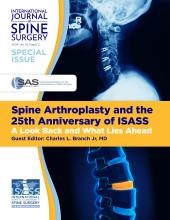ABSTRACT
Introduction A few articles on robot-assisted pedicle screw placement described the learning curve but failed to report on the overall operative time, including cases in which the robotic system malfunctioned. The purpose of this study was to identify a single surgeon's learning curve including estimated blood loss, surgery time, anesthesia time, robot time, and complications.
Methods A retrospective study was performed between January 2016 and August 2018 for patients who underwent posterior spinal fusion using the Mazor robot. Based on the charts, the robot time, time of anesthesia, and surgery time were recorded, as were the complications, misplacement of screws, and blood loss.
Results Of 62 robot-assisted surgeries scheduled, only 46 were performed (74.2%) upon patients with a mean age of 63.3 ± 13.0 years. The mean follow-up time was 13.2 ± 8.0 months and most commonly a fusion from L4 to S1 was performed (20/46, 43.5%). A high improvement in estimated intraoperative blood loss was observed of 755.7 ± 344.7 mL (slope = −9.89). A decrease in time in anesthesia, surgery, and robotic usage was identified with a slope factor of −3.64 (R2 = .22, SE = 85.4, P < .005), −3.97 (R2 = 0.30, SE 75.8, P < .005), −0.69 (R2 = .07, SE = 27.8, P < .09), respectively. Furthermore, a decrease in pedicle screw insertion time and operative time was found (slope = −0.05, R2 = .02, SE = 3.4, P = .37). In total, 5 major complications (cases 8, 19, 21, 35, 43) and 6 minor complications (cases 4, 14, 15, 20, 29), were identified (21.7%) without any learning curve.
Conclusions Robot pedicle screw insertion shows no major learning curve; however, the blood loss and the installation process of the system improved with experience.
Level of evidence 3.
Footnotes
Disclosures and COI: The authors have received no funding for this study and report no conflicts of interest.
- This manuscript is generously published free of charge by ISASS, the International Society for the Advancement of Spine Surgery. Copyright © 2020 ISASS.







